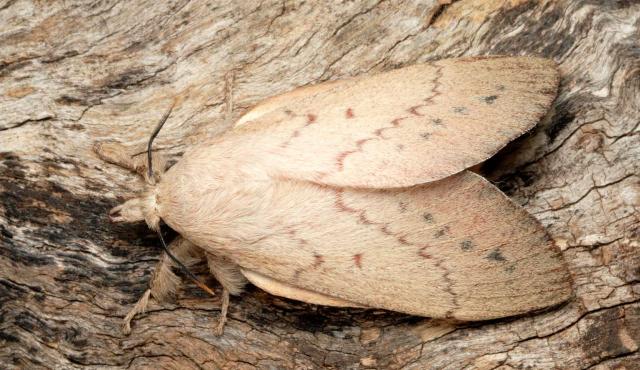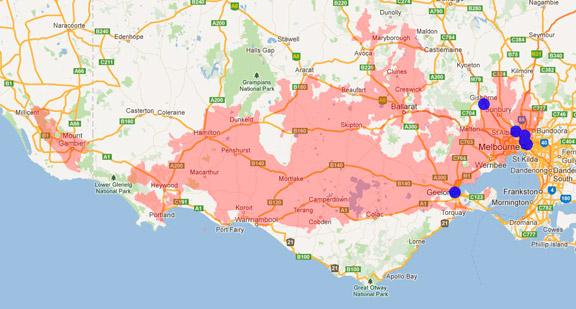A range of teacher professional learning programs will be developed to accompany the Biodiversity of the Western Volcanic Plains online outreach...

Gum Snout Moth
Entometa fervens
This moth usually rests on the ground amongst dry fallen leaves during the day, then moves up to feed on green leaves during the night. The caterpillar feeds on Eucalypt species. By day, the caterpillar camouflages by flattening itself against the stem of its food plant, with the hairs along its sides disguising its legs. It pupates in a white papery cocoon between two leaves on the food plant.
| Details | Description |
| Type | Invertebrate |
| Group | Insect - Moth |
| Identifying Characteristics | |
| Distinctive Markings | A dark patch under the hindwing, |
| Diet | Herbivore. Eats eucalypt leaves. |
| Habitat | Lives in eucalypt forests and woodlands. |
| Native Status | Native to Australia |
| Taxonomy | |
| Phylum | Arthropoda |
| Class | Insecta |
| Order | Lepidoptera |
| Family | Lasiocampinae |
| Genus | Entometa |
| Species | fervens |

Distribution maps indicate current and historic locations where species have been sighted.
Source: Atlas of Living Australia
| Conservation Status | |
| DEPI Advisory List | Not listed |
| FFG Act | Not listed |
| EPBC Act | Not listed |
The conservation status of species is listed within Victoria and Australia.
The Department of Environment and Primary Industry (DEPI) Advisory List consists of non-statutory advisory lists of rare or threatened flora and fauna within Victoria.
The Flora and Fauna Guarantee Act 1988 (FFG Act) lists threatened species in Victoria. Under the Act, an Action Statement is produced for each listed species.
The Environment Protection and Biodiversity Conservation Act 1999 (EPBC Act) is the Australian Government’s key piece of environmental legislation, listing nationally threatened native species and ecological communities.



